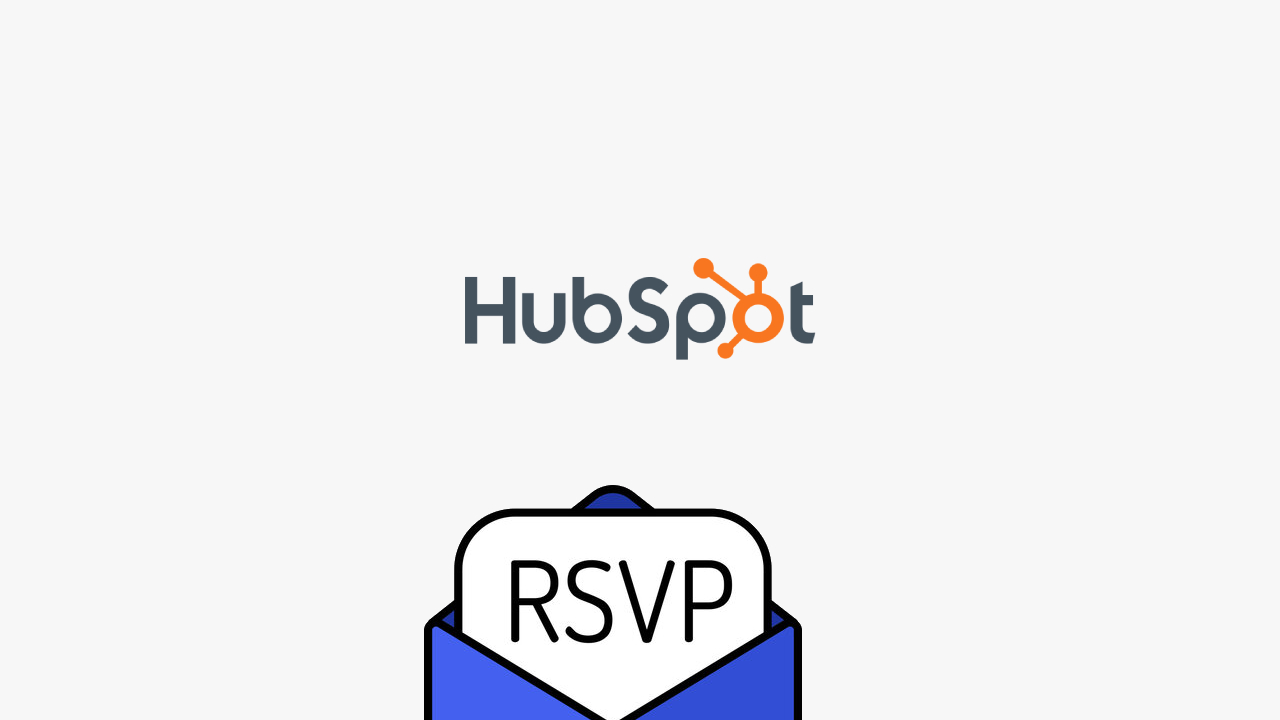Back to Blog
How to Use RSVP Buttons with HubSpot Email Marketing to Boost Event Engagement
Written by

When planning events, getting your audience to RSVP can make a significant difference in turnout and engagement. Incorporating RSVP buttons directly into your HubSpot email marketing campaigns is an effective way to encourage recipients to commit to your event with just a single click. Here’s a guide to using RSVP buttons within HubSpot to streamline event planning and maximize your marketing efforts.
Why RSVP Buttons Matter in Email Marketing
An RSVP button embedded in your email reduces friction in the registration process, making it easy for your audience to confirm attendance without navigating to an external webpage. Here are some benefits of adding RSVP functionality:
Increases Response Rates: A clear, single-click RSVP button can drive higher engagement and increase attendance.
Improves Audience Insights: Knowing who plans to attend helps you better prepare for your event and segment follow-up emails more effectively.
Enhances User Experience: RSVP buttons are user-friendly and encourage immediate action, especially when paired with engaging event descriptions and CTAs.
Setting Up an RSVP Button with HubSpot
HubSpot’s email tools make it easy to personalize and customize emails, and with tools like CalGet, you can create simple RSVP buttons that fit seamlessly into your marketing emails. Here’s a step-by-step guide:
1. Create Your Event on CalGet
To create a clickable RSVP link, start by setting up your event details on a tool like CalGet. Input the event’s name, date, time, location, and other relevant information, and CalGet will generate an event link with RSVP capabilities.
2. Generate an RSVP Link
Once your event is set up, you’ll receive a unique RSVP link that directs recipients to a landing page where they can confirm their attendance. CalGet’s RSVP link includes features that allow users to easily add the event to their preferred calendar once they confirm their RSVP, further increasing your event’s visibility.
3. Embed the RSVP Button in HubSpot Email
Design the Email: Start by creating your email in HubSpot’s Email Editor. Use a professional template or build a custom one with branding and messaging that highlights the value of your event.
Add the RSVP Button: Insert a button in the body of your email and use compelling text, such as “RSVP Now” or “Save Your Spot.”
Link to CalGet RSVP Page: Paste the CalGet RSVP link you generated into the button’s URL field. This will take users directly to your RSVP landing page.
4. Customize the Button’s Look and Feel
Personalize the button by using HubSpot’s customization options. Adjust the color, font, and style to match your brand identity and make it visually appealing. A well-designed, visible RSVP button is more likely to capture attention.
5. Test Your Email
Before sending your email, preview it in different clients and test the RSVP link to ensure a seamless user experience. Make sure the button is functional and that the RSVP link directs users to the right page.
Segmenting and Following Up with RSVPs
An RSVP button does more than just confirm attendance—it also helps you segment your audience for targeted follow-ups. After you collect RSVPs, leverage HubSpot’s CRM and segmentation features to:
Send Event Reminders: Automatically send reminders to attendees as the event approaches, including event details and add-to-calendar links.
Follow Up with Non-Responders: For recipients who haven’t responded, send a tailored follow-up email to encourage them to RSVP or learn more about the event.
Segment Post-Event Campaigns: Use RSVP data to create personalized post-event follow-ups, such as thank-you messages for attendees or content offers for those who couldn’t make it.
Tips for Maximizing RSVP Conversions
Here are some strategies to encourage RSVP engagement:
Use Urgency and Scarcity: Include copy that emphasizes limited spots or a fast-approaching deadline to increase urgency.
Include Event Highlights: Highlight key speakers, unique features, or special sessions to make the event feel valuable.
Make the Call-to-Action Clear: Use direct, action-oriented language to make your button stand out. “RSVP Now” is often more effective than something like “Learn More.”
Measuring Success: Tracking RSVP Engagement in HubSpot
Once your email is sent, it’s essential to track its performance and assess the effectiveness of your RSVP button. HubSpot’s analytics provide insights into open rates, click-through rates, and engagement, allowing you to see how well your RSVP button is performing. Additionally, if you used a CalGet link, you can monitor RSVPs through their platform as well.
Use these insights to understand what worked well and identify any areas for improvement. Testing different placements, button designs, and calls to action in future campaigns can help refine your RSVP strategy.
Closing Thoughts
Adding RSVP buttons to your HubSpot email marketing campaigns is a powerful way to drive engagement and simplify event registration for your audience. With tools like CalGet for creating calendar links and HubSpot’s user-friendly email editor, integrating RSVP functionality into your emails has never been easier. Make RSVPs a central part of your event strategy to increase attendance, improve audience insights, and create memorable event experiences.
By using RSVP buttons in your HubSpot campaigns, you’re making it easier than ever for your audience to engage with your events—setting the stage for a successful turnout and long-lasting connections.
Get Your Events on Everyone's Calendar.
Generate universal "Add to Calendar" links that work everywhere. Perfect for social media, emails, and websites.